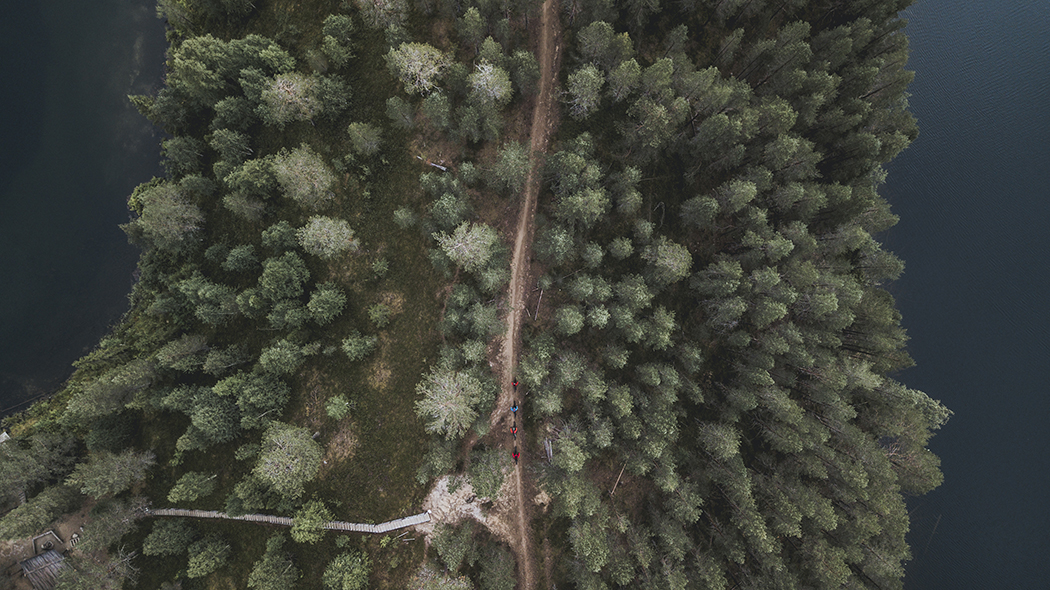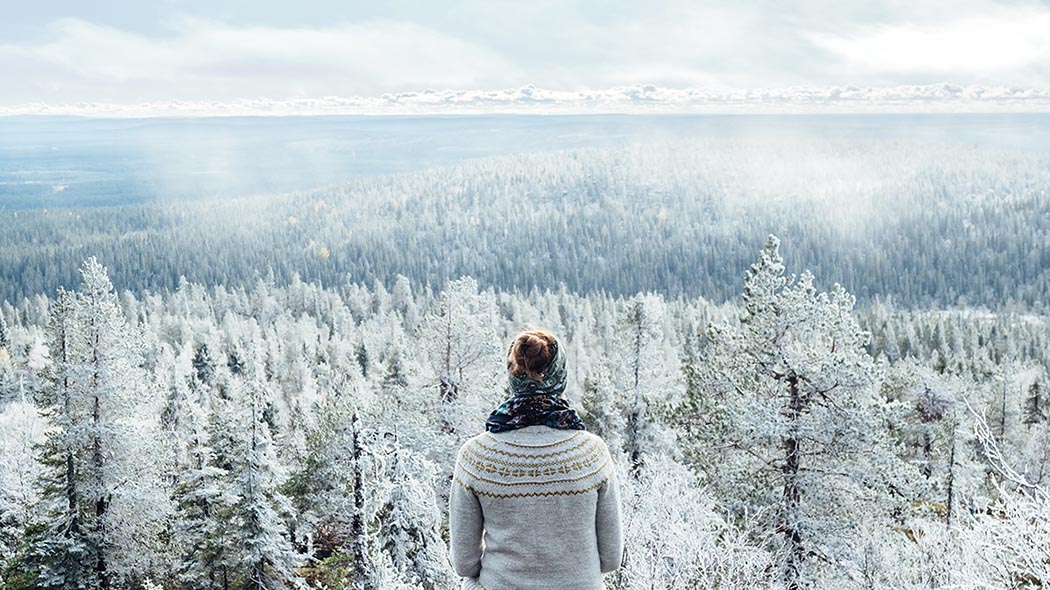Sights in Syöte National Park

Syöte Visitor Centre
Start your exploration of the national park at the Syöte Visitor Centre, located at the foot of Iso-Syöte Fell. The centre has full access for disabled people. Many of the routes through the national park begin from the front of the centre. Feel free to ask the staff if you need help.
The ‘Lastuja selkosilta’ (Flakes of Wilderness) exhibition introduces you to the nature of Syöte through the activities of people, as there have been people living in the area since the end of the last ice age. The temporary exhibitions are often the work of local artists.

Ahmakallio
Visitors that tackle the challenging ascent to the viewing tower at Ahmakallio are rewarded with superb views from 400 metres above sea level. From the viewpoint, one is surrounded by the forested hills in all their beauty. The best way to reach Ahmakallio is via the 12 kilometre hiking route that starts at the Syöte Visitor Centre. The route overlaps with part of the 17 kilometre Ahmankierros Trail. The other option is to approach from Jaaskamo (4 km from the parking area to the viewing tower). At Ahmavaara Hill, there have also been some findings of semiprecious stones.

Pytkynharju Ridge
Pytkynharju Ridge is around three kilometres long, and in its most impressive parts offers stunning views from the narrow ridge that rises 30 metres above its surroundings. It was formed at the end of the ice age when the melt waters dumped sand and gravel into a crevasse that had opened up in the ice sheet. Pytkynharju Ridge is located to the south of Iso-Syöte. The distance to Pytkynharju Ridge from either the Kellarilampi car park on the south side or the Lauttalampi car park on the west side is only a few hundred metres. From the Naamankajärvi car park on the east side, the walk is under one kilometre.

Vattukuru Ravine
The ravines were formed around 10,000 years ago by the erosion caused by the melt waters of the ice sheet. Contrasting with the imposing boulder slopes of Vattukuru Ravine, that stretch dozens of metres high, is the luxuriant bogland. Along Vattukuru Ravine’s 2.1 kilometre nature trail, you can admire the area’s abundant and diverse nature. The trail begins from the Lehtovaara car park close to the border of Lake Pudasjärvi and Taivalkoski Rapids, and has sections with duckboards and steps. With its nature trails, Vattukuru Ravine is a fitting summer destination for families with children.

Kaunislampi
Kaunislampi (Beautiful Lake) is true to its name. It is a protected primaeval forest area located outside of the national park, around 35 kilometres to the north of Syöte Visitor Centre. The Kaunislampi ravine lake was formed by a rupture in the bedrock. To the west of Kaunislampi, you can admire the stretches of ancient shoreline rocks that were shaped and transported as the ice sheet retreated, over 9000 years ago. Expanded by the melt waters, the sea at that time covered the area around Kaunislampi and only the tops of the hills remained above sea level.
There is a 6 kilometre day hiking trail that skirts around Kaunislampi. On the south side of the lake is a day-use hut where you can take your break at the end of the hike. There is a connecting trail from the hut to the hiking trail network of the National Park. You can get to Kaunislampi by following the 1.9 kilometre route from the parking area next to Ruuhensuo Road.

The Crown Tenant Farm at Rytivaara Hill
The Crown Tenant Farm at Rytivaara Hill (in Finnish) is a unique museum area, reconstructed in the middle of the National Park, which gives the opportunity to peer into the harsh living conditions of the tenant farmers of bygone days. Built in 1852, many generations of tenant farmers have lived at the farm – right out in the wilderness. At the turn of the millennium, Metsähallitus reconstructed at the location the house, cowshed, barn, sauna, cooking shelter and two drying barns, all according with their original designs. You can get to the Crown Tenants Farm at Rytivaara Hill from Syötekylä by following the signposts from the Ukonvaara parking area, which is located around 4 kilometres from the farm.
You can spend the night at Rytivaara Hill by reserving the use of the Rytitupa Rental Hut Further information and bookings: Syöte Visitor Centre.

Pyhitys
From the top of the 422 metre high Pyhitys, the highest hill in Syöte National Park, you can enjoy splendid wilderness views in every direction. During the summer, it is a two kilometre trip from the parking area to the top of the hill, and there is a lean-to shelter located halfway along the route. One should prepare for a steep climb, as the path rises 160 metres over a distance of just 1.5 kilometres.
The name Pyhitys speaks of the place’s history: in the same way as with the highest points in other areas, it was once a place where the Forest Sami would carry out sacred sacrifices. On the slope facing Lake Kostonjärvi you can find stone tables resting on smaller stone supports. These are where, thousands of years ago, fish and wild animals were sacrificed in order to ensure good hunting and fishing.

Soiperoinen
Soiperoinen is a very steep and narrow-topped ridge which runs between the clear waters of Lake Rääpysjärvi and Lake Soiperoinen. It is a relaxing place to visit, and the area features a number of 2–3 kilometre trails along with spots for taking a rest. There are also plenty of places to go swimming, so Soiperoinen is certainly a good day trip destination for families with children.
People have been walking along the ridges and lakes of Soiperoinen since the Stone Age. Those with a sharp eye will notice that the area has a number of Stone Age reindeer trapping tips, peat graves, charcoal kilns made of chalk, remains of old fish huts and reindeer cabins, meadow barns and, resting at the end of the lake, a fisherman’s raft.

Iso-Syöte
Iso-Syöte is Finland’s southernmost fell and is located in the southern part of the National Park. At its summit (432.5 m) there is plenty of fell vegetation, such as the crimson red alpine bearberry which can be seen there during the autumn. The 1 kilometre Huippupolku Trail (Fell Top Trail) starts from the parking area of hotel Iso-Syöte, and features a viewing platform. From there, the wooded hills of the National Park are laid out before you. Along the route, you can explore the area’s landscapes, nature and geological history. The area is part of the Iso-Syöte Hiking Area.

